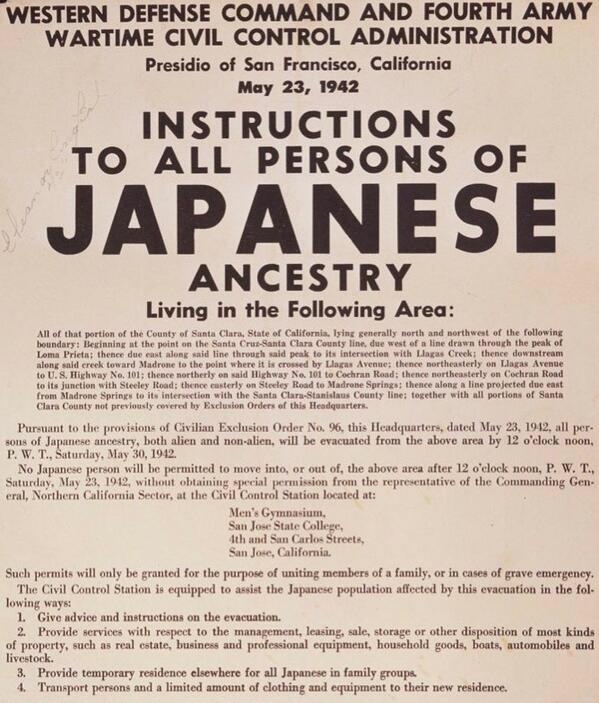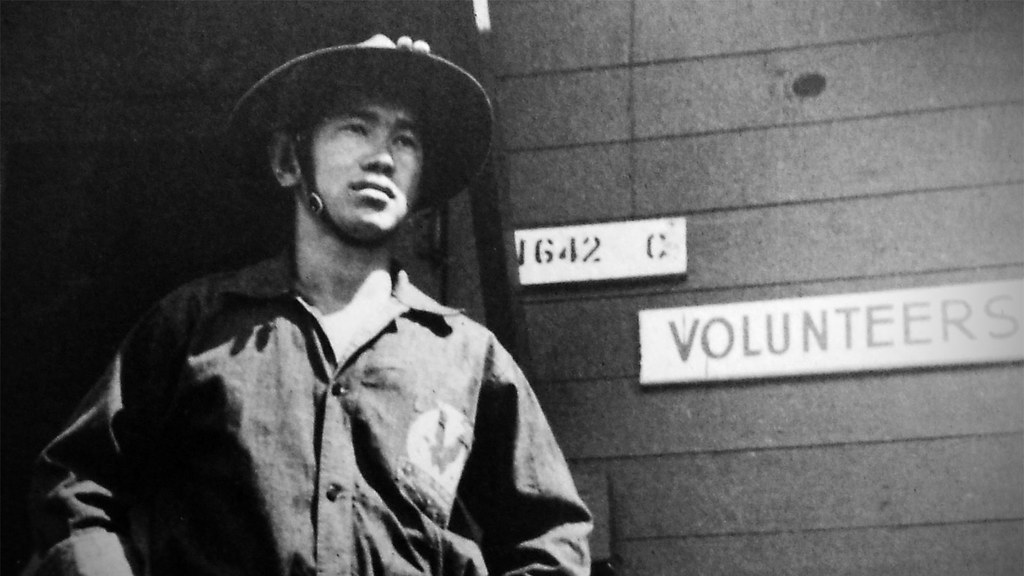Nearly 70 years after the Japanese attack on Pearl Harbor and the United States’ entry into World War II, Japanese-American soldiers receive the country’s highest civilian honor.
by BARBARA MARANZANI
Almost immediately after the December 7, 1941, attack on the U.S. naval base at Pearl Harbor, the loyalty of all those of Japanese descent living in America, regardless of their citizenship status, was called into question. In February 1942, President Franklin D. Roosevelt signed Executive Order 9066, which authorized the War Department to establish military zones in much of the western United States. Under this order, residents with “Foreign Enemy Ancestry” could be placed under surveillance, detained and even relocated by military fiat. Few Americans of European ancestry were detained under this order, which was primarily directed at those of Japanese descent. Eventually, more than 110,000 Japanese and Japanese Americans living on the U.S. mainland were forcibly removed and interned in 10 relocation centers. There, the detainees were subjected to harsh conditions that included overcrowding, water shortages, sub-standard housing and exposure to extreme weather.
In Hawaii, where ethnic Japanese accounted for more than one-third of the islands’ population, first-generation Japanese and Nisei faced similar suspicions. Although few in Hawaii were relocated, their freedoms were severely curtailed. Many military advisors expressed their concerns over the loyalty of Japanese residents serving in the armed forces, and efforts were soon underway to remove those who had served prior to Pearl Harbor. Members of the Hawaii National Guard were temporarily disarmed, and local ROTC students and cadets were dismissed from service. Determined to prove their loyalty to the United States and come to the defense of their fellow Hawaiians, these former servicemen formed a civilian aide group, the “Varsity Victory Volunteers” or VVV, which provided the physical labor needed for the massive construction of U.S. military bases in the Pacific.
Impressed with the VVV’s determination–and swayed by vocal protests over treatment of the Nisei soldiers–the War Department reversed course, announcing the formation of an all-Nisei combat unit, the 100th Infantry Battalion. After nearly a year of training on the U.S. mainland, the 100th was deployed to North Africa in September 1943, where it participated in the attacks on Monte Cassino, the breakout from Anzio and the final Allied Offensive push from Rome to the Arno River. In August of that year, the 100th was reorganized and became part of the 442nd Regimental Combat Team (RCT), another Japanese-American unit, under which it would serve for the rest of the war.
Formed just six months after the 100th, the 442nd RCT included additional soldiers from Hawaii, but was primarily comprised of volunteers from the internment camps and Japanese Americans who had served in the U.S. Army prior to the war. In June 1944, they too were deployed to Europe, where they fought in eight major campaigns in France, Italy and Germany. In October of that year, they played a key role in the bloody rescue of the “Lost Battalion,” an Allied unit that had been trapped and surrounded by Axis forces in the Vosges forest in France. In April 1945, the men of the 442nd–many of whom had family members living in U.S. internment camps–were among the first Allied troops to participate in the liberation of the Nazi concentration camp at Dachau, a sobering experience that would haunt many of them for decades. Eventually, more than 13,000 soldiers would serve in the regiment, with more than 700 members killed or missing in action.
The 442nd became the most decorated unit of its size in U.S. military history. In less than two years of combat, the unit earned more than 18,000 awards, including 9,486 Purple Hearts, 4,000 Bronze Stars and 21 Medals of Honor. Upon their return to the United States, they were praised by President Harry Truman for their brave stand both home and abroad, and were even the subject of a 1951 film, “Go for Broke”; the film’s title was derived from the unit’s official slogan. Many members of the 442nd went on to distinguished careers in science, academia and government, including nine-term U.S. Senator Daniel Inouye from Hawaii, who lost an arm due to World War II combat injuries and was among those attending Wednesday’s event.
Also honored at the ceremony were the more than 6,000 Japanese Americans who served in the Military Intelligence Service, or MIS, during the war. These members, many of whom were recruited directly from internment camps, provided translation and interrogation assistance to the war effort. The MIS is perhaps best known for the crucial role it played in deciphering a captured set of Japanese military documents, known as the “Z Plan,” which outlined plans for a final, large-scale counterattack on Allied forces in 1944. The discovery of the Z Plan has been hailed as one of the most important military intelligence successes of World War II.






1 comments:
This is an excellent article, but there are several errors.
1. This statement "Formed just six months after the 100th, the 442nd RCT included additional soldiers from Hawaii, but was primarily comprised of volunteers from the internment camps and Japanese Americans who had served in the U.S. Army prior to the war." is incorrect. 2/3 of the soldiers in the original 442nd RCT came from Hawaii. https://encyclopedia.densho.org/442nd%20Regimental%20Combat%20Team/ http://www.goforbroke.org/learn/history/military_units/442nd.php
2. Your statement "In April 1945, the men of the 442nd–many of whom had family members living in U.S. internment camps–were among the first Allied troops to participate in the liberation of the Nazi concentration camp at Dachau,..." needs to be revised. Since very few families in Hawaii who provided the great majority of men in the 100th/442nd were interned, that portion of your statement should be corrected to read "many of those from the mainland had family members ...." Also it was the 522nd FAB, not the 442nd RCT, that liberated a subcamp, not the main camp, of Dachau..." which has been a contentious issue with the military units that liberated Dachau. http://www.goforbroke.org/learn/history/military_units/522nd.php
Mahalo!
Post a Comment